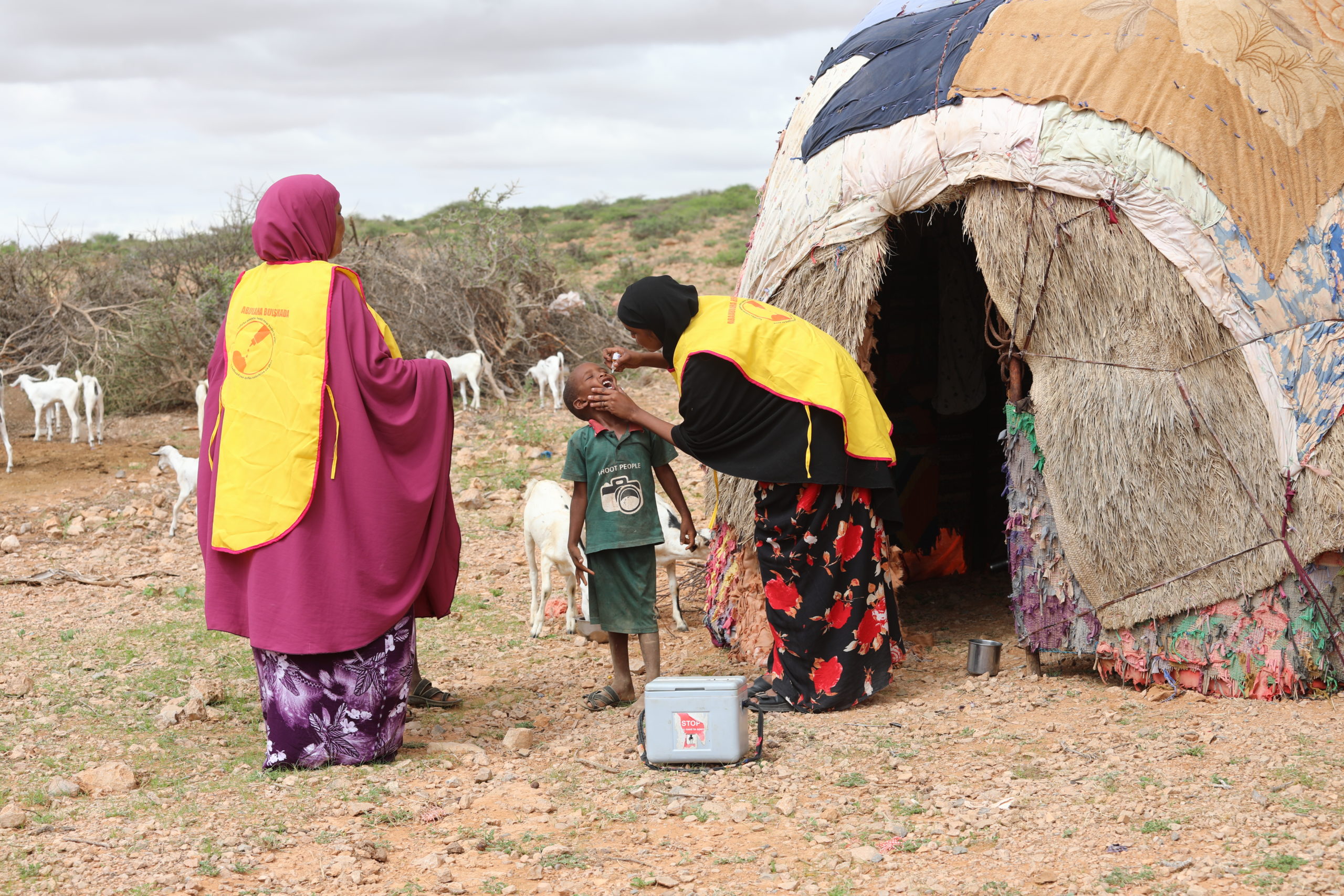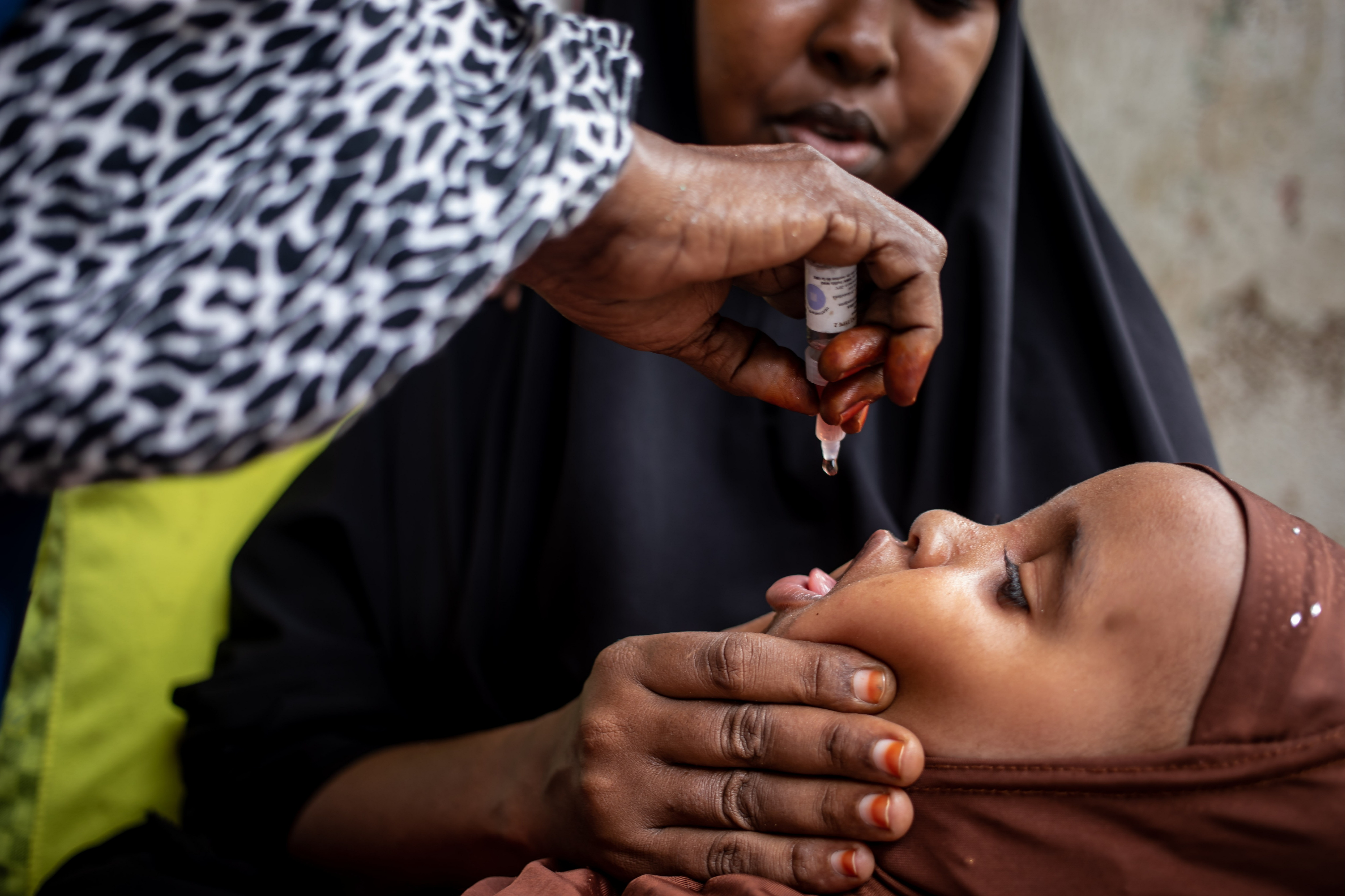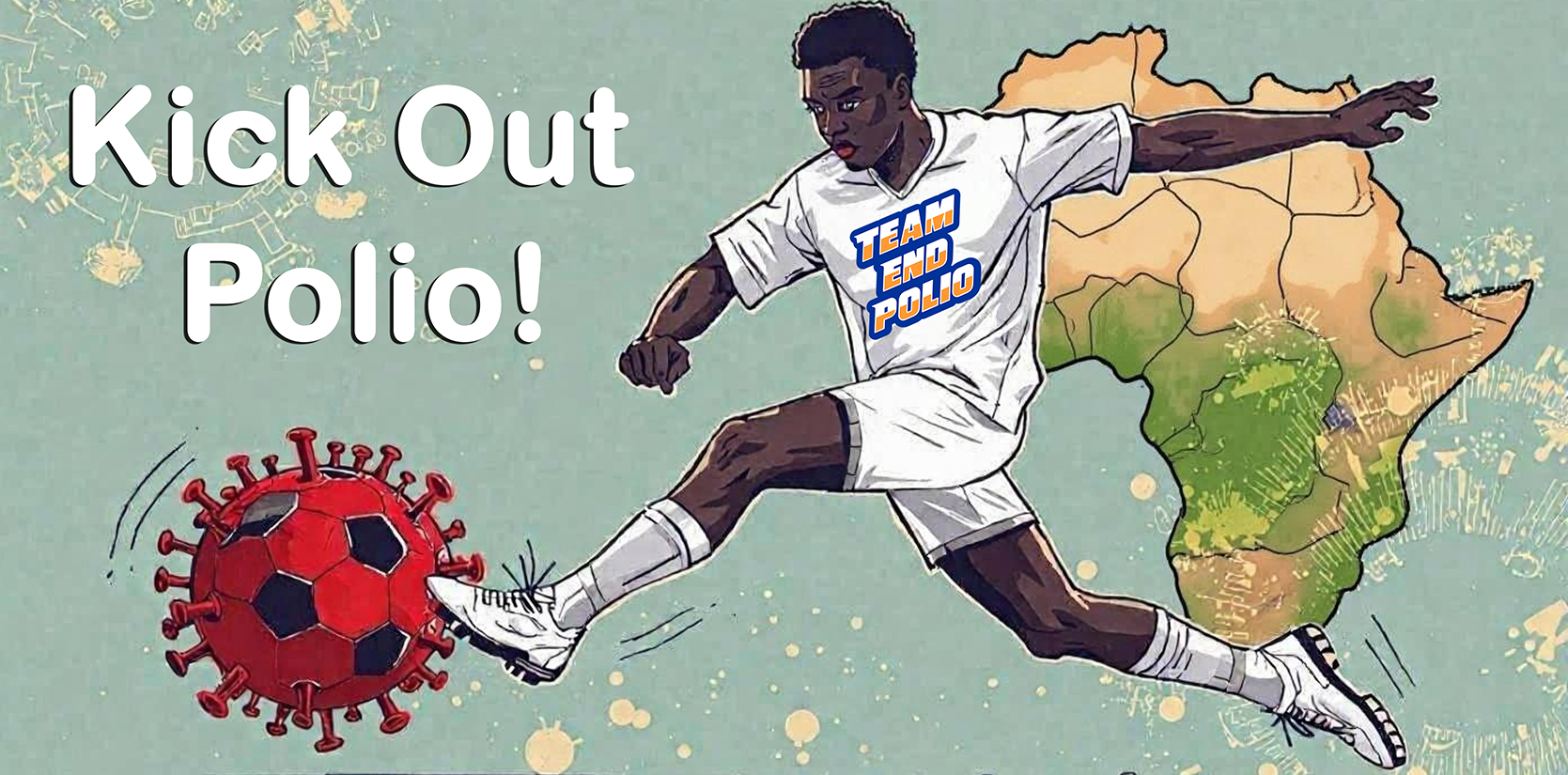
28 May 2025, Brazzaville/Amman/Geneva – For nearly a decade, the Horn of Africa has battled persistent outbreaks of variant poliovirus. The spread has been fueled by low immunity in children, unmonitored population movements, lack of access to children living in insecure areas, variable levels of national ownership of polio eradication efforts across countries, limited cross-border coordination and delayed responses to outbreaks.
In the face of these challenges, countries in the Horn of Africa are renewing the momentum to end these outbreaks and address this regional crisis. On the sidelines of the Seventy-eighth World Health Assembly, held between 19 and 27 May 2025 in Geneva, Ministers of Health from the Horn of Africa and Global Polio Eradication Initiative (GPEI) partners pledged to continue intensifying efforts to end polio in the region. They agreed to establish an interministerial coordination body to galvanize coordinated actions across countries in the region. Efforts include conducting synchronized polio vaccination campaigns, enhancing poliovirus surveillance, particularly along shared borders, and sharing information through efficient coordination mechanisms.
More than 18 million children vaccinated
Demonstrating strong intercountry coordination, in a milestone – and one of the largest vaccination drives in the region more than 18 million children in Dibouti, Ethiopia, Kenya and Somalia were reached by a synchronized – or coordinated, where it was not possible to synchronize – polio vaccination campaign conducted in 2 consecutive rounds between February and April 2025.
During the first vaccination drive, which began in Somalia in February and concluded in Ethiopia and Kenya, the 3 countries shared real-time information on vaccination and poliovirus surveillance to ensure no pockets of under-immunized children or circulating virus were missed.

Country-level vaccination efforts
Ethiopia has strengthened surveillance and preparedness efforts to prevent further spread. In February, over 15 million children were vaccinated in a campaign launched in the country’s Somali region.
In Kenya, nearly 1 million children were vaccinated in high-risk areas, including 10 000 along the border with Ethiopia and Somalia in the first 3 days of the campaign.
In Somalia, vaccination teams travelled door-to-door across 76 districts in central and south Somalia, reaching 2.4 million out of the targeted 2.5 million children under 5 years of age with novel oral polio vaccine type 2 (nOPV2). Health workers collaborated closely with counterparts in Ethiopia and Kenya to reach every eligible child living along or crossing the borders.
In Djibouti, in April 2025 more than 155 000 children received polio vaccines to boost their immunity and combat the high-risk of spread following the detection of variant poliovirus in a child and in environmental samples.
Mounting a strong search for poliovirus
The region is also reinvigorating efforts to detect poliovirus, particularly in high-risk locations, including by conducting a joint surveillance review across countries in the Horn of Africa. While Kenya has not reported any variant poliovirus cases so far in 2025, the country detected polio-like symptoms – acute flaccid paralysis – in children among new arrivals at Kakuma Refugee Camp through ongoing surveillance. Stool samples collected tested negative for poliovirus.
Somalia has continued to combat variant poliovirus circulation since 2017. In 2024, the virus paralyzed 7 children. No cases have been reported so far this year.
Ethiopia is the Horn of Africa’s new hotspot for variant poliovirus type 2 circulation. Variant poliovirus was detected in 44 children last year, reinforcing the urgency of outbreak response efforts.
“The commitment shown by the Horn of Africa countries in coordinating their polio vaccination efforts reflects the strength of regional solidarity. By working together, we are ensuring that progress towards polio eradication is sustained. WHO and the Global Polio Eradication Initiative remain committed to supporting these countries in their continued fight against polio,” said Acting WHO Regional Director for Africa Dr Chikwe Ihekweazu.
“Diseases like polio don’t recognize borders and hide among vulnerable populations. While we acknowledge the governments and health workers of Somalia, Ethiopia and Kenya, for their strong collaboration, we must recognize we can all do more to ensure no child misses out on polio and other lifesaving vaccines and to intensify efforts to track, trace and stop polio from spreading,” said WHO Regional Director for the Eastern Mediterranean Dr Hanan Balkhy.
Preparations for the cross-border vaccination drive and collaboration took centre stage during the Horn of Africa coordination meeting conducted in Kampala in September 2024, when WHO, GPEI partners and health representatives from Djibouti, Ethiopia, Kenya, Somalia, Tanzania and Uganda gathered to strengthen cross-border plans and align priorities.

